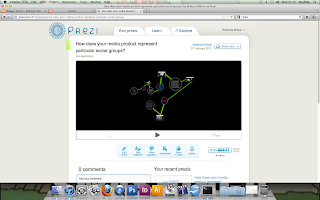
Our film, Nostalgia, conforms to a variety of conventions that apply to many thriller films. We use the binary opposition convention which helps to present a difference in character between the antagonist and protagonist. Binary opposition is common in thriller films and is used in The Dark Knight between the protagonist Batman and the antagonist Joker. In our film the protagonist is Detective Vince Clarke and Dominic Christopher is the antagonist. This is portrayed with the use of Mise-En-Scene with the outfits which creates a contrast in class such as the Detective's suit to the hooded jumper and trackies of Dominic.

A Convention that we also used was credits. With our credits with kept them in the common order to keep fluency and we retained the same font throughout. We used a font that could reflect the film with big bold lettering which have been damaged. Hopefully reflecting Vince Clarke's personality of being big and bold with a few cracks and weaknesses in his life.

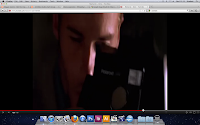 In our thriller we use the effect of time and develop it. We developed this convention by using flashbacks and using first person camera shots to put empathy into the audience's minds. We use the flash back with Alice Clarke. This allows the audience to ask questions on whether Alice Clarke is still alive or if something happened to her playing on their minds. The convention is also used in the opening sequence to the film 'Memento' as it also uses the convention of time. This developed use of time, like ours, makes the audience question of when the film period is set and what has already happened out of the audience's knowledge. This is another convention that we want to play on the audience's mind.
In our thriller we use the effect of time and develop it. We developed this convention by using flashbacks and using first person camera shots to put empathy into the audience's minds. We use the flash back with Alice Clarke. This allows the audience to ask questions on whether Alice Clarke is still alive or if something happened to her playing on their minds. The convention is also used in the opening sequence to the film 'Memento' as it also uses the convention of time. This developed use of time, like ours, makes the audience question of when the film period is set and what has already happened out of the audience's knowledge. This is another convention that we want to play on the audience's mind.A convention that we challenged was music. In most thriller films there opening sequence has background music which is normally the theme tune. In our opening sequence we challenged it as we played two different songs during the opening two minutes. We did this as we wanted to confuse our audience by introducing straight away two different moods and the songs reflected these.
Another Convention that we challenged was the chase scene. Our thriller opens with a chase scene which is common in most thrillers but we challenge the convention by making our main character the chaser. In most thrillers the main character is the one being chased and you feel empathy for them and want him to get away. In ours we completely turn it around and make the detective the chaser.
Question 2. how does your media product represent particular social groups?
Question 3. What kind of media institution might distribute your media product and why?
nostalgia2012.wikispaces.com - this is a web page dedicated to our film with information on it.
Question 4. who would be the audience for your media product?

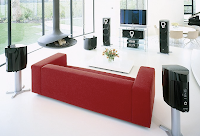 My target audience is a man called Harry. He is highly educated in a university course about the human mind. He is 24 and lives in a very rich area of Cambridge, his background is a wealthy family. Enjoys thriller movies and his favorite type of thriller is psychological. While he watches the film he tries to work out what is happening and what is going to happen. But he enjoys a twist in the story that can make him think! His favorite TV show is CSI and has all the episodes on his computer that he has downloaded off of iTunes. He uses iTunes to download all of his films and movies and rarely buys them in disc form. He is very technical and has set up a home cinema system complete with a 50 inch HD tv and sound system. His favorite film is Silence of the lamb. It follows a detective investigating a case. It is a physiological thriller just like ours.
My target audience is a man called Harry. He is highly educated in a university course about the human mind. He is 24 and lives in a very rich area of Cambridge, his background is a wealthy family. Enjoys thriller movies and his favorite type of thriller is psychological. While he watches the film he tries to work out what is happening and what is going to happen. But he enjoys a twist in the story that can make him think! His favorite TV show is CSI and has all the episodes on his computer that he has downloaded off of iTunes. He uses iTunes to download all of his films and movies and rarely buys them in disc form. He is very technical and has set up a home cinema system complete with a 50 inch HD tv and sound system. His favorite film is Silence of the lamb. It follows a detective investigating a case. It is a physiological thriller just like ours.Question 5. how did you attract/address your audience?
Here is a annotation of our opening sequence talking about class, age and gender and how we portrayed these.
Question 6. What have you learnt about technologies from the process of constructing this product?
To plan, film, edit and release our opening sequence we had to use a lot of software, equipment and websites.
Final Cut Express
To edit all of our shots and sound we used Final Cut Express. Final Cut Express was new software to me and the rest of the gorup so it took a while to get used to but i came to terms with it very quickly. Using this software gave us the ability to edit the opening sequence to the way we wanted. The reason why we used Final Cut Express were that it gave us the chance to upload the videos we shot on the Cannon HD cameras to it; import downloaded soundtracks, ambient sounds and intra-diegetic sounds; edit the shots colour, sound, pitch levels, length, speed etc.
Blogger
I had never blogged before in my life so blogging was a new experience for me and the rest of the group. Blogging took a few lessons to get used to but at the end was habitual to me. We blogged on every idea or information we had and made it clear to everyone what we were doing and why.
Youtube
I was used to youtube before i even started the course and had some knowledge of the website and its uploading services. We used youtube to upload everything that we made, preliminary task, animation storyboard and our opening sequence. With our own account we had all of our work grouped into one account making it easy to click through our videos.
Equipment
The equipment we used were a Cannon Ligria HFR106 HD camera, a tripod and wires to film and then upload our clips. We used a HD camera so it allowed us to export our clips in HD format. It also allowed us to store all out clips in one plae making it easier to import to final cut express.
Other websites and software we used were google maps. We used google maps to help find a key location for our sequence. Also used photoshop to create logos
Question 7. Looking back at your preliminary task, what do you feel you have learnt in the progression from it to the full product?
http://www.youtube.com/watch?v=6C4VnB1Fj5I Here is our preliminary task. We developed a lot of techniques that we used in the opening sequence and can tell that we have developed in all departments of filming, sound and editing.






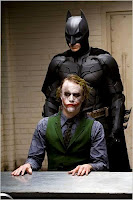




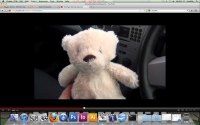


.jpg)





